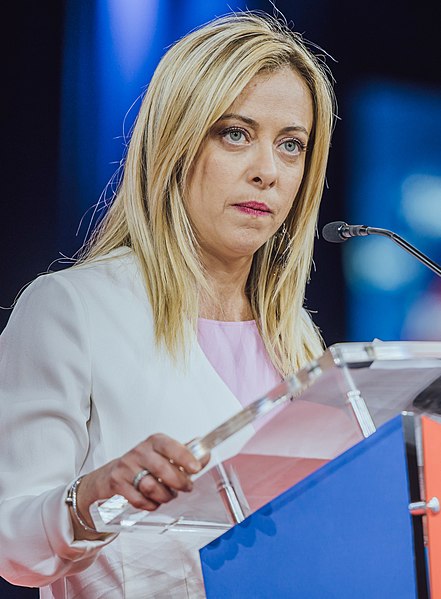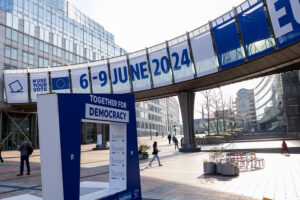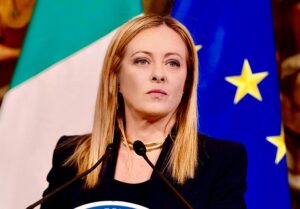In France, more than 13 million people voted for the presidential candidate Marine Le Pen of the far-right Rassemblement National (RN). In Italy, the post-fascist party Fratelli d’Italia (Brothers of Italy) is about to take over government in a right-wing alliance with Lega and Forza Italia. How is this possible?
In France, long before the election, a reactionary movement involving government officials, the media, and renowned personalities from across the political spectrum had formed and increasingly dominated the political agenda, giving the xenophobic narrative of the "Great Replacement" a firm place in social discourse. Moreover, Éric Zemmour’s candidacy helped shift the focus of debates to the far right and, through the coexistence of various far-right currents, diversified and trivialised this ideological space, while demonising Jean-Luc Mélenchon’s left-wing alliance NUPES. Emmanuel Macron’s refusal to make an electoral recommendation at the national level in the context of duels between NUPES and RN added to this. As a consequence, the Republican Front collapsed in the 200 constituencies where RN had qualified for the second round. Now, Le Pen is also the third-strongest force in Parliament.
Le Pen’s campaign focused on social issues, such as raising the net wage and ensuring retirement age starts at 60. She called for support for university students and families, as well as protecting purchasing power in the face of rising energy prices. But it was also a question of republican values, French identity, and the country’s sovereignty in its old grandeur and thus about Marine Le Pen as France’s "social patriot". Her election programme is consistent with familiar demands: she is opposed to large-scale immigration and criminals living at the expense of the French; she lobbies for a referendum on stricter immigration controls; she calls for reduced transfer benefits for non-French citizens; she wants to improve public safety and supports the expansion of detention centres and additional police staff. Those who found this programme too moderate initially voted for its radicalised version in the presidential elections: Éric Zemmour, the catch-all option for the tradition-conscious far-right.
Le Pen’s success is also motivating Italy’s right, even if the situation in the country is developing differently. Since the 2009 financial crisis, Italy has had new governments, government reshuffles or technocratic governments every two years. From the perspective of the Italian right, the French presidential system seems almost desirable. Consequently, the right in Italy mercilessly exploits any destabilisation of the political system and, if necessary, pulls the strings in the background to overthrow governments.
The right can take advantage of the "fall" of Mario Draghi after the demands of the Movimento 5 Stelle (Five Star Movement; M5S) were all rejected. These demands sought fairer distribution of funds to relieve the burden on families and businesses in view of the high energy costs, in favour of poor families. M5S had demanded, among other things, minimum wages and an additional month’s salary for those who do not have a job. The fact that these demands were completely ignored led to a confidence vote, which Draghi ultimately lost also because the Partito Democratico (PD) hoped for a new, broader centre-left alliance that included the centre party Azione. However, Azione, led by former minister Carlo Calenda, rejected the alliance parties responsible for Draghi’s fall and left the alliance. For his part, the PD chairman had ruled out a coalition with the Five Star Movement.
This, however, leaves little to stand in the way of the success of a broad right-wing political alliance with the leading post-fascist Fratelli d’Italia, Lega and Berlusconi’s Forza Italia. According to the Italian electoral system, one-third of the seats are elected by constituencies and two-thirds by electoral lists based on proportional representation. Currently, polls see Fratelli d’Italia at 24%, Lega at 14% and Forza Italia at 7%. This means that 100 years after the March on Rome, a post-fascist party that still bears the Mussolini flame in its logo not only leads the right-wing camp, but also the electoral polls. This alone demonstrates the disenchantment of voters in Italy with their political party spectrum and the shift to the right in society, which is also – to a large extent – driven by the media. Around 40–50% of voters are still undecided or do not intend to vote. This trend is not new; voter turnout has been declining for years. For example, in the last local elections in Rome, it was 48%.
But what can be expected from the post-fascists? Giorgia Meloni is committed to NATO and condemns the war in Ukraine. According to recent statements by Berlusconi, with her right-wing governing coalition, she is striving for a constitutional amendment in favour of a presidential democracy, like in France. She stands for Christian values, for the “natural” family, and opposes abortion and the rights of the "LGBT lobby". She demands secure borders against mass immigration and Islamic violence and campaigns for the independence of the people against the bureaucrats of Brussels. With her slogan "God, Fatherland, Family", she describes herself, like Viktor Orbán, as a right-wing conservative who stands for tradition. She opposes the introduction of a minimum wage and calls for the abolition of the current Italian unemployment benefit scheme ("Reddito di cittadinanza"; similar to the German Hartz IV scheme), which protects a million people from absolute poverty.
It remains to be seen what all this entails for Italy in the long term, especially since Meloni can rely on support from strong Italian right-wing movements such as CasaPound, sports clubs and cultural events of the right-wing cultural scene.



